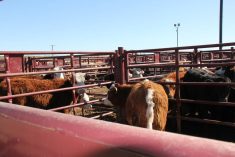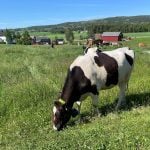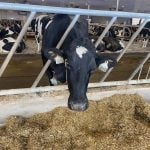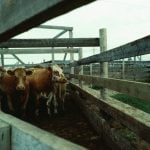Nutrients provided in the ration influence animal performance. Animals will either lose, maintain, or gain weight. The nutrition program not only affects the cow but also the unborn calf.
Visual evaluation of animal condition can be misleading, especially with a winter haircoat. A more objective, hands-on method to evaluate how the cows are managing is by body conditioning animals. This process determines the amount of fat cover an animal is carrying. Information obtained from this practice has many implications for ration development and managing feeding programs, reproductive efficiency, calf health and growth.
The condition score of an animal is determined by manual evaluation. Using a thumb or fingers, apply pressure to feel the amount of flesh covering the short ribs, spine, hooks and pins and either side of the tail head. How sharp the bones feel to touch and the amount of tissue between the bones indicates how much fat the animal is carrying. When scoring the short ribs, do it on the right-hand side of the animal. The rumen is predominately on the left side and if checking in this location, there will be an overestimation of body condition. The sharper the bones feel, the lower the animal weight and body condition score. The Beef Cattle Research Council website has a good video that explains how to body condition score your animals at beefresearch.ca/tools/body-condition.
Read Also
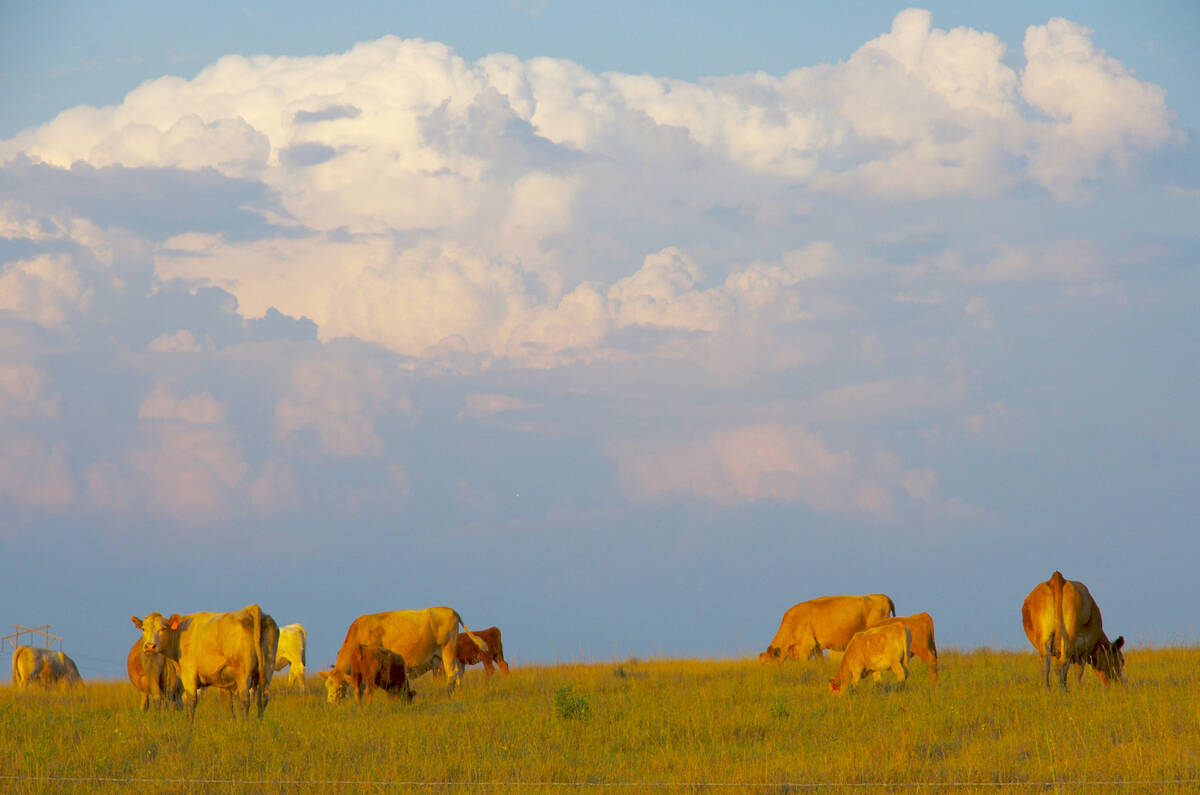
Canadian Beef Check-Off Agency reports on investments and activities
The check-off agency’s work behind the scenes is what ensures cattle check-off dollars are invested wisely, accounted for transparently and deliver measurable value back to producers and importers.
Body condition influences how much heat an animal can lose in the summer and retain in the winter. Fat is a good insulator. In summer, fat or over-conditioned animals have trouble dissipating heat, while in the winter, fat helps the animal stay warm. This reduces the amount of energy required to maintain body temperature in cold conditions.
When the ration does not supply adequate energy, the animal mobilizes fat to produce extra energy (heat). Over time, this results in a thinner animal which increases maintenance energy requirements. One body condition score is equivalent to 200 pounds of weight. When an animal is at a score of two instead of a three, an additional 1,400 pounds of hay is required over the winter just to keep warm. Cows should maintain a score of three in winter right up to calving.

The lack of energy in a ration is usually caused by feeding low-quality ingredients. Over-mature forages and straw have a low feed intake due to high fibre and low protein content. Using higher-quality forages, and adding grain and a protein supplement to the ration improves the quality, digestibility and amount of feed an animal can consume daily.
Impact on calf development
To maintain a 265-day calving interval, the cow should be exposed to the bull at about 81 days or 11 weeks post-calving. This is when milk production is near peak levels and feed intake is approaching maximum. Nutrient requirements are at the highest level in the annual production cycle. If the nutrition program is not adequate or if the cow is thin, more nutrients are committed to the cow and not the developing fetus. This has many consequences.
When mating occurs, it takes approximately 14 days for the fertilized egg to implant in the uterine wall. If hormone levels are not adequate, the pregnancy fails.
After implantation, the placenta develops. The first 30 days are critical. If the cow is not receiving adequate nutrition, the size of the placenta is reduced. This limits the transfer of nutrients from the cow to the fetus; especially in the last half of pregnancy, which results in lower calf birth weights.
During the first two months of pregnancy, the early stages of fetal growth occur. At this stage of development, the fetus is the size of a mouse, but the different types of cells are developing based on the genetic contributions of the cow and bull. Even at this size, a heartbeat can be detected at 21 days and limb development by day 25 (Canton et al., 2019).
Genetics set the potential makeup of a calf. Nutrients passed across the placenta affect the development of stem cells, which are coded to produce bone, muscle, fat, connective tissue and cartilage. Fetal programming, the use of nutrients available at critical times during pregnancy, regulates the extent to which each tissue type develops. Nutritional excesses or deficiencies alter the development of the different cell types.
Major organs such as the pancreas, liver, heart, lungs and brain, develop in sequence. If there is a deficiency during organ development, that organ will be smaller or not have the capacity to function to maximum capacity. Calves born to thin cows will weigh less and have smaller internal organs. Those born to cows on a low-protein diet have lungs and trachea that are 40 per cent smaller than calves born to cows in good condition (Long, 2010). This reduces oxygen availability throughout the life of the calf which reduces growth rates. It also predisposes the calf to respiratory diseases at weaning or arrival at a feedlot.
Primary muscle fibre development occurs in the first three months of pregnancy. A secondary development continues into months six to seven. This sets the amount of muscle that the carcass will have. Rapid growth of the muscle fibres occurs in the last trimester. Too much energy in a ration results in larger numbers of fat cells developed and a shortage of protein reduces the number of muscle cells.
Low protein in rations during mid-pregnancy negatively affects overall calf performance. Feeding a higher-protein ration at this stage improved calf weight gains and the final marbling score in the carcass. Weight gains during the pre-weaning stage differed by as much as 134 pounds (Café, 2006). Some of the slower growth was caused by thin cows not producing as much milk, but also the reduced capability of the calf to grow.
Light birth weight calves do not perform as well as larger calves. Café split calves of similar genetics into groups based on a 63- or 85-pound birth weight. Pre-weaning weight gain was 0.7 pounds less for the light birth weight calves. During the backgrounding phase, the lightweight calves gained 38 pounds less and the final carcass weight was 151 pounds less.
The feeding programs for cows in early- and mid-pregnancy have a large effect on overall calf performance and profitability of the operation. Providing a balanced ration throughout the year has many benefits.
Barry Yaremcio holds a master’s degree in animal science (nutrition) and a bachelor’s degree in agriculture (animal science). He worked in extension for Alberta Agriculture for several years and now is a ruminant nutritionist and production management consultant. Reach him through beefconsultant.com.




